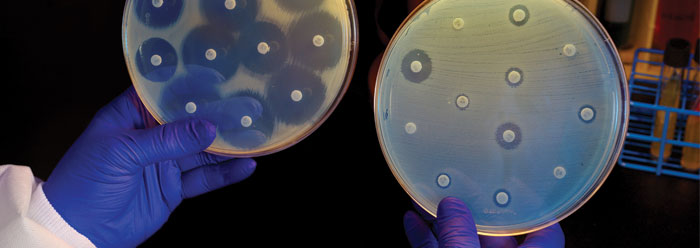On February 24, 1988, evolutionary biologist Richard Lenski began an ingenious ongoing experiment to test and demonstrate evolution. He and his coworkers have nursed thousands of generations of the common gut bacterium Escherichia coli, feeding them broth with limited nutrients. The team watched for decades to see if the germs might evolve a solution to this low-nutrient challenge. After about 31,500 generations, some finally cracked the code and changed. Evolution promoter Richard Dawkins wrote that this was “a beautiful example of evolution in action,” and that “creationists hate it.”1
The Harvard Gazette recently wrote, “Though the bacteria were originally genetically identical, they have evolved.”2 How could anybody doubt statements like this in light of what happened? But two genetic details topple this “beautiful example of evolution.”
Lenski’s team adds an energy molecule called citrate to the bacteria’s broth. All normal E. coli have a protein gate that brings citrate into the cell by trading out another chemical, but only when oxygen is absent. In wild E. coli, molecular switches interact with the gate genes’ promoter region to build more gates when oxygen levels drop. After about 31,500 generations, the germ’s cellular machinery cut out and pasted these genes into another spot on the bacteria’s DNA. The new location already contained an “on” promoter. These new mutants began promoting gate production even with oxygen present. This “evolved” bacterium could now import and use citrate in the presence of oxygen but was “surprisingly weak when it first appeared.”3
What really happened here? A mutation caused a loss of regulation. In the scientists’ special soup, bacteria with this loss grow for a little longer than others that could still regulate their citrate-gate production.
After about 33,000 generations, something dramatic changed. Those mutants’ descendants suddenly grew like gangbusters, consuming more citrate. When researchers first described this development in 2012, they speculated that mutations constructed new and complicated cellular machinery, but others have since revealed that the second change was not nearly that impressive.4
Instead of gaining new features, the bacteria lost regulation over an additional gate protein—one that pumps the sugar succinate into the cell. A mutation damaged its genetic “off” switch. Cells with both mutations now have two unregulated genes, both producing transport gates. One gate imports citrate by trading out a succinate, and the other pumps in more succinate that can then be traded. By these losses of regulation, citrate lands on the menu even with oxygen present, and the bacteria grow faster than previous generations.
Normal E. coli with intact genetic regulators retain the tools to cope with ever-changing conditions. But throw these mutants into any natural environment and they would fade to the back of the pack as they waste energy making so many extra gates.
So, did Lenski’s bacteria evolve? Well, mutations did help them use more citrate, but only by losing healthy regulation. Molecular biologist Michael Behe wrote,
This is evolution by degradation. All of the functional parts of the system were already in place before random mutation began to degrade them. Thus it is of no help to Darwinists, who require a mechanism that will construct new, functional systems.5
We could say that a man who lost both arms “evolved” the ability to wriggle through a small pipe leading to a new food source, but how would he fare among robust peers with arms? It is the same with these “evolved” bacteria. Lenski’s experiment has now surpassed 50,000 E. coli generations. After all those opportunities to prove evolution can construct something new, these germs have merely shown beautiful examples of degradation in action.
References
- Dawkins, R. 2009. The Greatest Show on Earth: The Evidence for Evolution. New York: Free Press, 117, 130.
- Powell, A. Evolution in real time. Harvard Gazette. Posted on news.harvard.edu February 13, 2014, accessed August 13, 2015.
- Quandt, E. M. et al. 2014. Recursive genomewide recombination and sequencing reveals a key refinement step in the evolution of a metabolic innovation in Escherichia coli. Proceedings of the National Academy of Sciences. 111 (6): 2217-2222.
- Blount, Z. D. et al. 2012. Genomic analysis of a key innovation in an experimental Escherichia coli population. Nature. 489 (7417): 513-518.
- Behe, M. A Blind Man Carrying a Legless Man Can Safely Cross the Street: Experimentally Confirming the Limits to Darwinian Evolution. Evolution News. Posted on evolutionnews.org January 11, 2012, accessed August 13, 2015. Emphasis in original.
Image credit: Centers for Disease Control and Prevention.
* Mr. Thomas is Science Writer at the Institute for Creation Research.






















